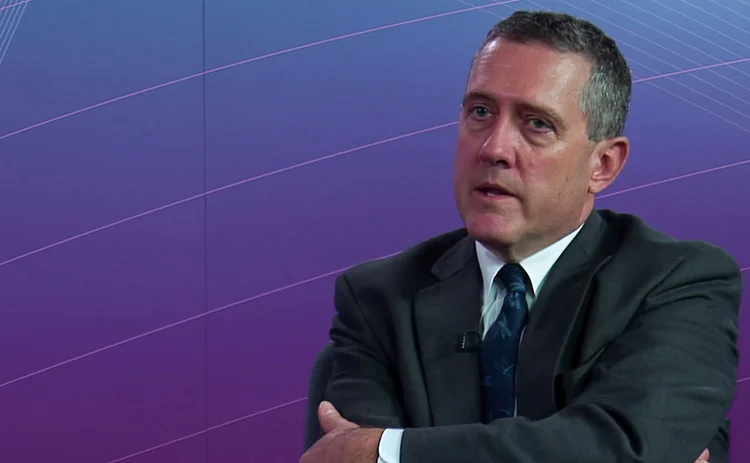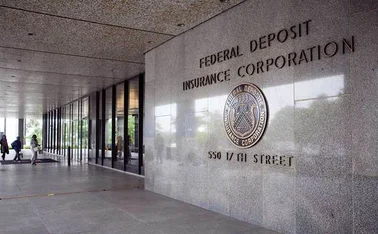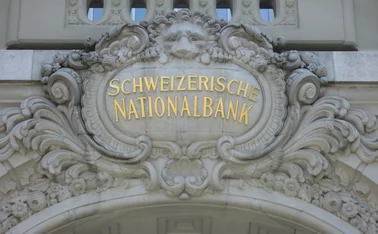
Next financial crisis “will be brewing” in shadow banking – Bullard
Fed has limited powers to tackle Silicon Valley threat to financial stability

James Bullard, president of the Federal Reserve Bank of St Louis, cited the threat posed by poor regulation of the ‘shadow banking’ sector as potentially the cause of a future financial crisis.
“All the action is coming out of Silicon Valley and on things we call non-banks,” Bullard said in an interview with Central Banking journal. “It’s that shadow world where the next crisis will be brewing, and how is the regulatory apparatus going to handle that going forward?”
Part of the challenge is that the Federal Reserve System only regulates institutions with a bank charter or bank holding companies – subject to a legal interpretation – and does not have a remit to cover technology companies, which Bullard claimed deliberately avoid regulations.
“The whole game in Silicon Valley is to do regulatory arbitrage: ‘let’s provide financial services in ways that are not covered by ordinary laws, and let’s build up a business, like Uber. Let’s build up a business and a constituency for that business outside of the normal legal framework, and then we will wait for the legal system to catch up, and then we’ll litigate at that point’,” Bullard said.
The St Louis Fed chief, who is responsible for the Eighth Federal Reserve District, added: “All of that I think is OK. That is probably the normal course of innovation in any industry. But you would hate to see that lead to some kind of financial crisis. So the challenge is: how to understand this, number one; and then how to cope with it, number two, in the years ahead.”
FSOC: too political for purpose?
The institution tasked with macro-prudential oversight in the US is the Financial Stability Oversight Council (FSOC).
“But FSOC is a collection of regulatory agency heads and the US Treasury secretary, and I have always felt like maybe that wasn’t the right forum, necessarily,” said Bullard. “It creates a kind of inside Washington, highly politicised kind of environment under which to consider these issues.”
Bullard believes such issues might be better tackled “maybe outside the Beltway or in some other forum where you don’t have heads of agencies worried about protecting their agency, and the Treasury secretary worried about how it’s going to play politically, because I think these are bigger and deeper issues than just sort of parochial analysis would be able to deal with”.
No such body exists as yet.
Dangers of disruption
Bullard added that many officials from large banks have told him not to “worry” about digital disruption, saying “we’re going to wait for Silicon Valley to innovate and then we’re going to buy it, or we’re going to innovate ourselves”.
“But that’s not how this occurs, I don’t think,” said Bullard. “When you see fundamental disruption, it’s because there is some new business model, and the incumbent can’t deal with the new business model. That’s the kind of disruption that you’d be watching for.”
He pointed to the rise of Alibaba in providing banking services in China, even though the tech company is not a bank. “Disruption occurs in ways that are always invisible to the incumbents that are inside of a heavily regulated industry,” Bullard added.
Regulatory pendulum swings back
Bullard also stated that amendments to US bank regulations introduced in the aftermath of the global financial crisis “probably” represented the regulatory “pendulum” swinging “back a little” towards less regulation.
But the effort to “get more efficient” regulation in the US, spearheaded by the US Treasury and supported by many heads of many US supervisory agencies, does not involve “a wholesale change”. “I would say relatively minor changes,” Bullard told Central Banking journal.
“Congress passed a new bill that made some changes to Dodd-Frank, but they were relatively modest,” Bullard said, later on adding: “It’s pretty clear the Dodd-Frank framework is going to stick, and is the basis of US regulatory policy going forward. There have been changes at the margin. Probably some of those were very much warranted. But I do not expect a wholesale change in financial regulation.”
Bullard said some of the amendments involved tailoring regulations to the size of the institution. “The size differences between a small bank and the very largest banks are enormous in the US. You go from anywhere from a couple hundred million dollars in assets to $2 trillion in assets,” Bullard said. “That’s a big difference. They are really fundamentally different businesses.”
Return of light covenants?
Bullard added that moving forward there is concern among bankers at smaller banks that while there are “good loans to make”, intense competition has resulted in the terms are viewed as “too lenient”. “I do worry about that, because that sounds like overextension of credit that won’t stand up in a downturn,” said Bullard.
The St Louis Fed president said the issue was not “overwhelming at this point”, adding that on the deposit side, smaller banks “feel like they don’t have enough margin to make a respectable profit”.
Only users who have a paid subscription or are part of a corporate subscription are able to print or copy content.
To access these options, along with all other subscription benefits, please contact info@centralbanking.com or view our subscription options here: http://subscriptions.centralbanking.com/subscribe
You are currently unable to print this content. Please contact info@centralbanking.com to find out more.
You are currently unable to copy this content. Please contact info@centralbanking.com to find out more.
Copyright Infopro Digital Limited. All rights reserved.
You may share this content using our article tools. Printing this content is for the sole use of the Authorised User (named subscriber), as outlined in our terms and conditions - https://www.infopro-insight.com/terms-conditions/insight-subscriptions/
If you would like to purchase additional rights please email info@centralbanking.com
Copyright Infopro Digital Limited. All rights reserved.
You may share this content using our article tools. Copying this content is for the sole use of the Authorised User (named subscriber), as outlined in our terms and conditions - https://www.infopro-insight.com/terms-conditions/insight-subscriptions/
If you would like to purchase additional rights please email info@centralbanking.com
Most read
- ‘Do I die, or do I survive?’ Officials reflect on Basel III complexity
- French president calls for expanded ECB mandate
- ECB says iPhone is currently incompatible with digital euro








